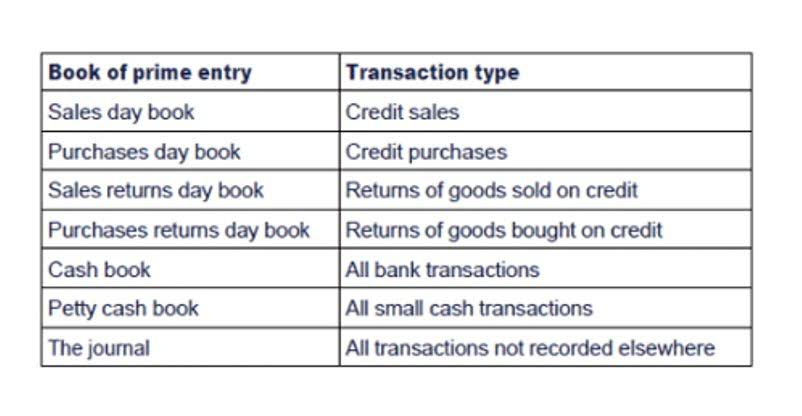
Meanwhile, the supplier would have $1,000 in accounts receivable on their balance sheet. Accounts receivable is the money that customers owe a business for goods or services that have been delivered but not yet paid for. If the costs of collecting the debt start approaching the total value of the debt itself, it might be time to start thinking about writing the debt off as bad debt—that is, debt that is no longer of value to you. Bad debt can also result from a customer going bankrupt and being financially incapable of paying back their debts. For comparison, in the fourth quarter of 2021 Apple Inc. had a turnover ratio of 13.2.
Great! Hit “Submit” and an Advisor Will Send You the Guide Shortly.

Accounts payable are short-term debts your company owes to vendors and suppliers. Some examples include expenses for products, travel expenses, raw materials and transportation. By the end of Year 5, the company’s accounts receivable balance expanded to $94 million, based on the days sales outstanding (DSO) assumption of 98 days. The journal entry reflects that the supplier recognized the transaction as revenue because the product was delivered, but is waiting to receive the cash payment. Hence, the debit to the accounts receivable account, i.e. the manufacturer owes money to the supplier.
What’s the difference between accounts receivable and accounts payable?
- While accounts receivable is money owed to your company (and considered an asset), accounts payable is money your company is obligated to pay (and considered a liability).
- The most prominent benefit is the ability to secure payments for more of your outstanding debt, which directly relates to a corresponding increase in your cash position and overall revenue.
- As the name would suggest, average accounts receivable reflects the average value of debts owed to your business by its customers over a given period.
- The IRS’s Business Expenses guide provides detailed information about which kinds of bad debt you can write off on your taxes.
- With accounts receivable financing, on the other hand, your business still owns the unpaid invoices.
- Then don’t hesitate to enforce them, even if it means turning down a few people in the short term.
Suppose an electronic components supplier received an order from a manufacturer. The manufacturer placed an order and the requested components were delivered based on the purchase agreement. Access and download collection of free Templates to help power your productivity and performance. In the example below, you can see how AR is portrayed on the balance sheet in one of CFI’s financial models. We provide third-party links as a convenience and for informational purposes only.
Want More Helpful Articles About Running a Business?
- Many companies may see accounts receivable as a burden since the assets are expected to be paid but require collections and can’t be converted to cash immediately.
- To help financial statement users make other decisions, GAAP call for other disclosures regarding receivables.
- When receivables are discounted with recourse, the issue arises as to whether the transfer should be treated as a sale or as collateral for a loan.
- Besides his extensive derivative trading expertise, Adam is an expert in economics and behavioral finance.
- It is included in either the long-term investment or other asset section of the balance sheet.
We recommend that you review the privacy policy of the site you are entering. SoFi does not guarantee or endorse the products, information or recommendations provided in any third party website. Balance sheets point to a specific moment in time, which is typically the end of a quarter, six-month period, or year.
- The example above uses 30-day increments to separate the debts, but if you follow an atypical billing cycle or offer non-standard credit options, you may choose an alternate schedule.
- We recommend that you review the privacy policy of the site you are entering.
- In general, accounts receivable financing may be slightly easier for a business to obtain than other types of capital financing.
- Accounts receivable factoring is a type of small business financing where you sell your unpaid invoices to a factoring company.
- For asset sales, they pay approximately 90% of a receivables value and will pay the rest minus fees once an invoice has been paid in full.
Would you prefer to work with a financial professional remotely or in-person?
If Accounts Receivable is not managed properly, it can lead to cash flow problems for the business. The company may struggle to meet its financial obligations, which could ultimately lead to financial instability. The two methods are not mutually exclusive, and some businesses will have a provision for https://www.bookstime.com/ doubtful debts, writing off specific debts that they know to be bad (for example, if the debtor has gone into liquidation). This content is for information purposes only and should not be considered legal, accounting, or tax advice, or a substitute for obtaining such advice specific to your business.

Just as with banks that make loans, it’s important to compare what different factoring companies would charge. Qualifications for accounts receivable financing are much less stringent than for other types of small business financing, such as small business loans or business lines of credit. Accounts receivable is the amount owed to a company resulting from the company providing goods and/or services on credit. Accounts payable and accounts receivable are often confused and understandably so as they both represent the funds going in and out of your business. In short, accounts payable is the money you owe, whereas accounts receivable is the money others owe you. We’ve prepared an in-depth guide to compare accounts payable vs. accounts receivable to help you gain a better understanding of these two bookkeeping basics.
A/R aging report
The example above uses 30-day increments to separate the debts, but if you follow an atypical billing cycle or offer non-standard credit options, you may choose an alternate schedule. Further, we provided a simpler format that identifies a company’s accounts receivable on a single row. However, suppose your business sends higher accounts receivable def volumes of individual invoices to customers over a month. In that case, you’ll likely choose a more detailed format with additional rows that break out the owed amounts by specific invoice. Furthermore, accounts receivable are current assets, meaning that the account balance is due from the debtor in one year or less.
Are accounts payable debits or credits?


